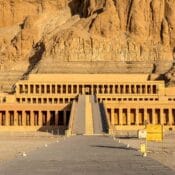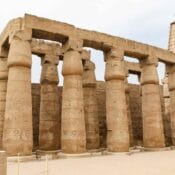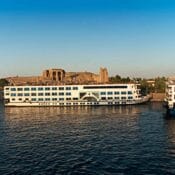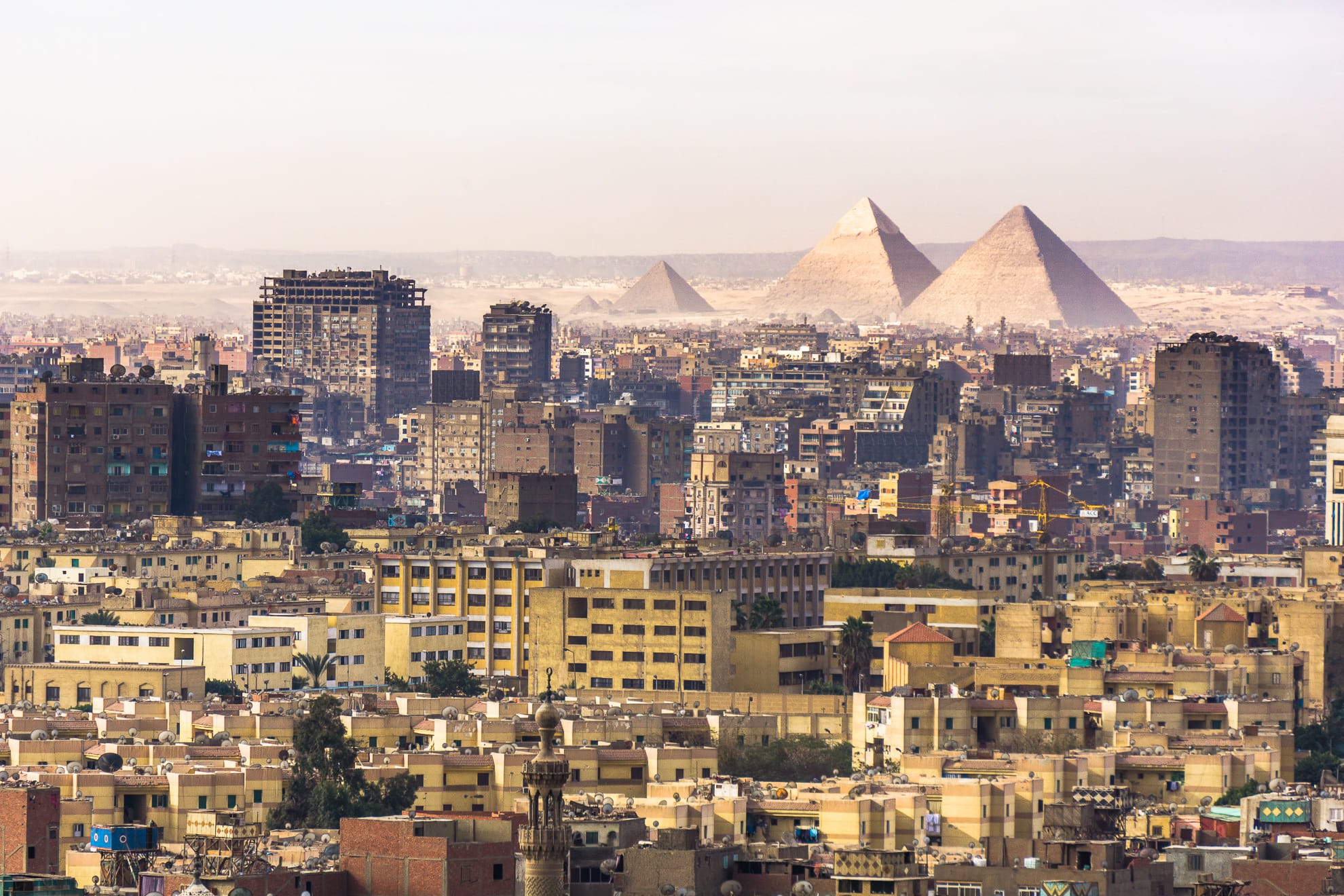
Gizeh Stadt in Ägypten
De hoofdstad van de prefectuur Gizeh is Gizeh-stad. Het werd formeel gesticht in de vierde eeuw voor Christus. In de Egyptische geschiedenis was het mogelijk een klein dorpje uit lang vervlogen tijden. Het lag aan de westoever van de Nijl, midden op de weg die Heliopolis met Memphis verbond. De stad ten zuiden van het huidige Gizeh was de beroemde hoofdstad, bekend als “Memphis”. Gedurende de geschiedenis van het oude Egypte was Memphis een belangrijk commercieel en cultureel knooppunt. Memphis verloor aanzienlijk aan belang toen het christendom zich door heel Egypte verspreidde.
Na de islamitische verovering werd Memphis verlaten, terwijl Gizeh meer aanzien genoot. Amr Ibn Al-As, de leider van het Arabische veroveringsleger, gaf opdracht om de stad adequaat te versterken. Er zijn grote moskeeën gebouwd in Gizeh, maar helaas staat er geen enkele meer overeind. In dit gebied, dat voornamelijk uit landbouwgrond bestaat, is nog steeds veel groen en vindt veel agrarische activiteit plaats. In de loop van de geschiedenis heeft het land ook overstromingen door de Nijl gekend, vooral in de laaglanden. Jarenlang was Gizeh slechts een klein stadje, omringd door bescheiden nederzettingen van boeren, vissers en plattelandsdorpjes.
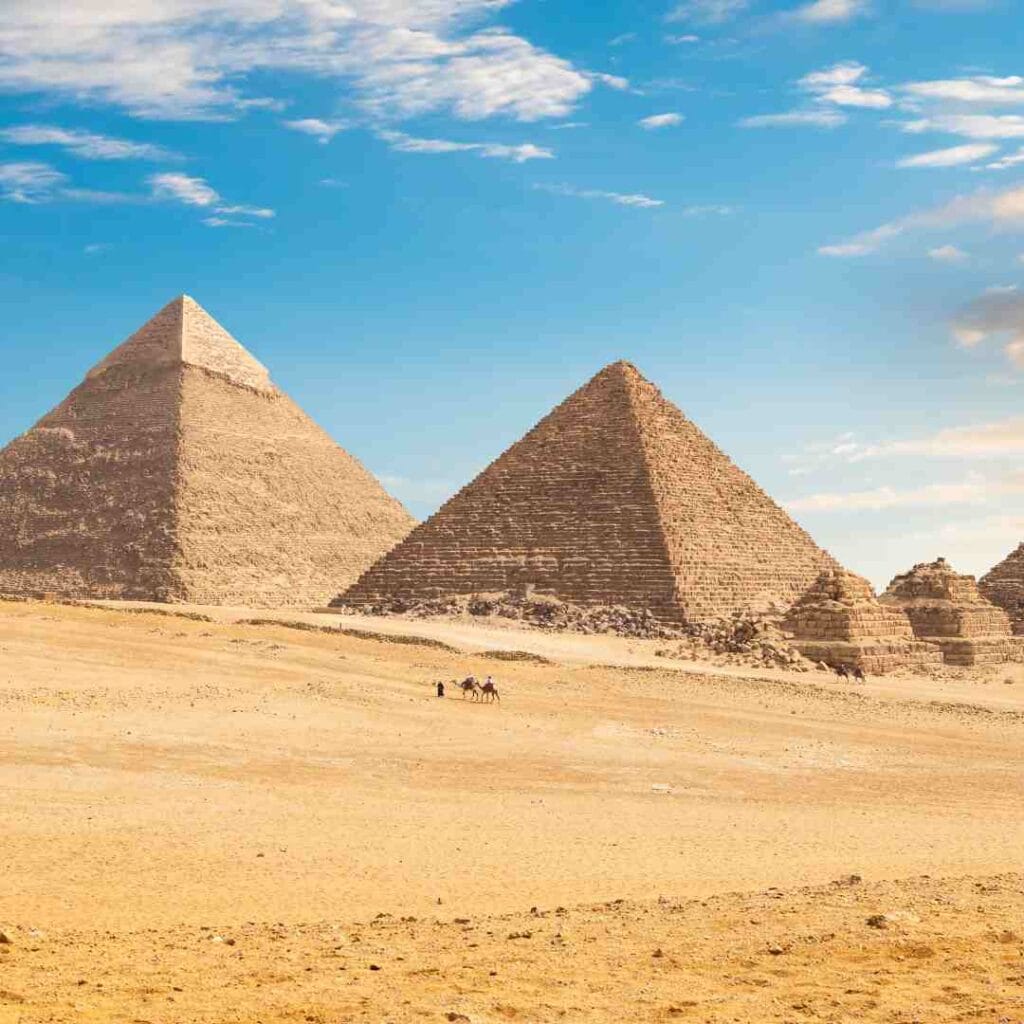
Memphis was left behind after the Muslim conquest, but Giza was more highly valued. Amr Ibn Al-As, the Arab conquest army’s commander, gave the order to fortify it well. In Giza, magnificent mosques were constructed, but sadly none of them are still standing. Despite the fact that a large portion of this region is farmland, there is still a sizable amount of vegetation and agricultural activity. Additionally, particularly in the lowlands, it has experienced Nile flooding throughout its history. Giza was just a tiny town for many years, surrounded by small farming and fishing communities and rural villages.
Giza in the Contemporary Era
The Suez Canal was officially opened in 1869 in front of the Egyptian governor Ismael Basha, as well as notable dignitaries from throughout the world, including kings, princes, princesses, counts, and ministers. and most importantly, French Empress Eugénie, the third French Emperor’s wife. In order to facilitate transit and visitation, a significant program of public works was planned, implemented, and involved building, reconstruction, decoration, and maintenance. This is how “Pyramid Avenue” projected in Giza, a place of renowned visitors, notably historical landmarks.
New neighborhoods with schools, hotels, restaurants, banks, and other businesses popped up. Beginning in the early 20th century, Cairo University’s grandiose vision took shape. a plot of land close to the Nile’s west bank. The government also decided to be New Cairo University. However, it actually and physically belongs to the nation of the city of Giza. In addition to Egypt, the Arab region and Africa also have this university as their parent institution.
Following that, numerous embassies were constructed in the city, particularly in the El Duqqi neighborhood and the city center. The city of Giza is currently a part of Greater Cairo for geographical and demographic reasons, although historically they were two different provinces with their sovereign mayors and councils:
Greater Cairo included the entirety of Cairo, the majority of Giza, and a portion of the Al-Qalyubia Province, which is located to the north of modern-day Cairo. Around 20 million people are living in this area.
Diversity of Giza monuments
The majority of the structures at Giza date to ancient Egypt. Contrary to Cairo, which possesses the majority of Muslim and Christian Coptic monuments on Egyptian soil, old Muslim and Christian monuments are uncommon in the city. There are not many historical sites from ancient Egypt.
Sakkara, de uitgestrekte necropolis van de grote oude hoofdstad Memphis, bevat een verscheidenheid aan monumenten, waaronder de piramides boven de trappiramide van koning Zoser en een groot aantal mastaba’s (de graven van oude edelen met thema’s die prachtige taferelen uit het dagelijks leven in het oude, versierde Egypte uitbeelden). Deze twee locaties behoren tot de belangrijkste historische locaties in Gizeh. In grote ondergrondse ruimtes, serapiums genoemd, liggen heilige stieren (Apis) begraven in enorme stenen sarcofagen. De ruïnes van de oude hoofdstad van Memphis zijn ook in Gizeh te vinden. Andere belangrijke historische plekken in het gebied zijn Dahshour, Abu Sir, Atfih en Abu Rawash; Bahareya ligt echter 380 kilometer van de grens met Gizeh in de westelijke woestijn. Het plateau van Gizeh, waar de enorme piramides van Cheops, Chefren en Menqueos, en ook de Sfinx, liggen, is de belangrijkste locatie.
Alle Kategorien
Neueste Beiträge
Luxor Tagestour: Am meisten beleuchtete Tempel
Entdecken Sie luxuriöse Nilkreuzfahrten
Planung der perfekten Reiseroute für Ihre Nilkreuzfahrt


